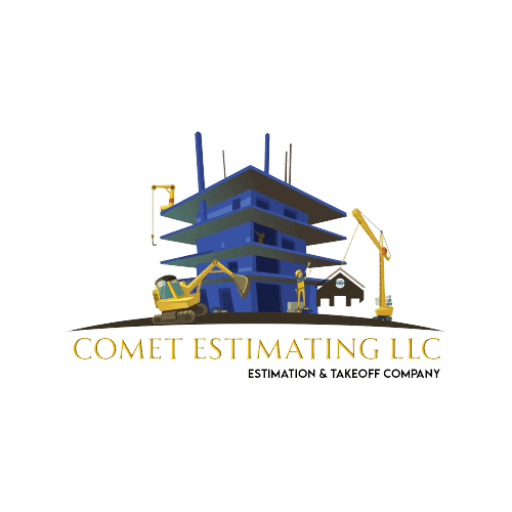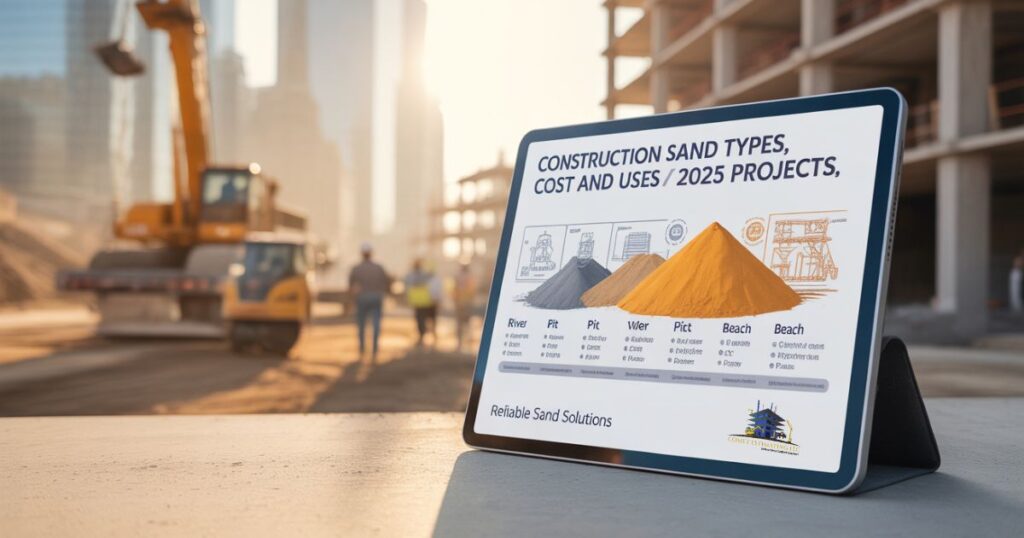Construction sand plays a vital role in every building project, whether it’s for residential homes or commercial structures. It makes materials stick together, is stable, and has long term strength. In 2025, choosing the right construction sand is more important than ever due to changes in material availability, pricing, and building standards. Builders and contractors have come to a state where they have to keep up with the current trends so as to prevent cost overruns and delays.
Whether you’re planning a small home renovation or a large-scale project, understanding the types and costs of construction sand can save you both time and money. As the construction industry is expanding by leaps and bounds, one is likely to notice a substantive growth in the utilization of quality sand that can make the building have durability, quality end results as also the reduction of structural defects in the long term. This blog will guide you in decision making skills and enhance your overall project planning.
Most Common Types of Construction Sand Used Today
There are various kinds of sand that are generally used in construction and all have their characteristics. River sand is natural, fine, and clean which are ideal in plastering and concrete. Manufactured sand, also called crushed stone sand or M-sand, is granite-derived aggregate that originated in the 1970s in India. It has the main advantage over natural sand that it can be produced at short notice and can be used directly in small concrete works. The pit sand is coarse, sharp which makes it ideal when it comes to robust foundations.
The next widespread one is utility sand that is employed in backfilling and leveling purposes because of its compactness. Sand of beaches which is available in parts of the region may not be favored because it has excessive salt which influences durability. Understanding how they all differ allows you to choose which type to use in a particular construction project.
Construction Sand Cost Per Ton in 2025 New Ratesw
In 2025, the cost of construction sand per ton varies between $30 to $70, depending on type, quality, and delivery location. The river sand is comparatively costly since there are environmental restrictions, as well as the shortage of the sand. M-sand is a manufactured product, and due to this consistency and low price, m-sand is the most favored product by the contractors.
Other influences include the distance of the vehicle delivery, the rates imposed by suppliers, and the demand in the area which again affect the final price. Purchase in bulk or purchase locally (local quarries) can be cheaper. Never buy before comparing prices of the trusted suppliers and asking sample testing in order to reassure that you receive the correct quality at the optimal rate.
What kind of sand is best done residential and commercial?
In case of residential building, they employ fine river sand or M-sand since some people prefer smooth finishes and improved plastering and small-scale handling of concrete. These types of sands are useful in making walls and the floors sturdy and offer a clean finish ready to paint or tile. The M-sand is highly used in home construction especially since it is available and prices are affordable.
Commercial construction projects on the other hand normally involve the use of coarser sand granules varieties. Such are best suited to heavy structural members, foundations and structural work. The choice of sand depending on the type of the project will result in improved performance and long-term outcomes.
How to Choose the Right Construction Sand for Your Project
The right sand should be based on project needs. Whether you require sand to be used in plastering or smooth finished work, fine and clean river sand and M-sand are the appropriate variety. When aiming at structural strength in concrete, use coarser ones such as pit sand or crushed stone sand. You should always look at the size of the grain, its purity, and place of origin before purchasing.
Having a sample tested with silt, the level of moisture and shape of particles is also useful. Poor sand (or unwashed sand) will damage the structure in the long-run. Talking to a construction specialist or a takeoff service can ensure that you select the right type of construction to suit your project and avoid fatal cost errors.
3 Major rewards of high-quality Sand use
Using high-quality construction sand ensures a strong bond between materials, which enhances the durability of concrete and mortar. It minimizes the chances of cracks development, seepage of water, and unleveled settlement. Quality sand also enhances the looks of the surface resulting in smoother finish that takes a long time to wear out and does not need much maintenance.
The other advantage is long run cost savings. Using low-grade sand that is cheaper may seem like a good bargain; however, this may cause structural problems that would cost a lot of money to fix. Performance: Quality sand is reliable and lowers wastage and keeps your project on-time which will give your investment superior value in the end.
Where to Buy Reliable Construction Sand Near You
To avoid delays and prevent extra cost its very important to find a reliable supplier. Check nearby quarries or bulk material dealers whose reviews are positive and whose selling organizations are licensed. Looking at the place of product searching or taking a sample before making the purchase can present you a more accurate idea of the sand texture and purity.
Suppliers are also available on the internet with verified rates of ratings and delivery choices on online platforms and building markets. In selecting a supplier, look at the delivery schedules, availability of the product and customer service. Not sure where to get it? Then professional estimating services will be able to provide references and contacts to trusted sources depending on where you are located and what sand you need.
How Much Sand Do You Need?
The estimation cost depends on the area and depth of the site. To give one instance, a plain floor or slab may require 0.5 to 0.6 cubic meters of sand to 100 square feet. Multiply the area by the thickness and convert it to tons according to the density of the sand to know a more reasonable quantity of it.
The worst thing that can happen regarding sand is to overestimate and end up wasting the sand or putting unnecessary cost in the process. On the other hand, this can also postpone your project in case of sand underestimation. With the help of electronic devices or through the estimation, you can get complicated estimates more accurately. By taking the assistance of the professional service you can get an estimate of the takeoff thus saving you both time and money wastage on buying unwanted materials.
The Errors that People Commit When Purchasing Sand
A typical thing that people make is to purchase unwashed or poor-quality sand without determining the silt or clay composition. This may undermine the strength of concrete and develop later issues such as cracking in the surface or irregular settlement. Most customers also do not consider the right grain size that would be required to fit their respective construction jobs thus resulting in inefficient finishes.
The second one is a low estimate of the transportation costs or selecting the suppliers without a check of their credibility. This amounts to failures of getting the material in time or getting substandard material. To prevent these above factors you should always check the supplier, take samples and do the calculations to know the correct amount before making the purchase.
How an Accurate Sand Takeoff Can Benefit Your Project Budget
Proper sand takeoff would help you to purchase the right quantity of necessary material; hence you will not end up purchasing the material you do not need or happen to be in short supply. COMET Estimating LLC that is really good allows you to control your budget and avoid any construction surprises. It also results in less hectic movement of work and other resources scheduling.
Engaging the services of professional estimators or adopting the services of digital takeoffs will expose you to a clear understanding of what your material requirements are depending on your project drawings. This saves money too, as well as enhancing efficiency and wastage of materials. Contractors and builders should take advantage of a precise takeoff as a wise move in managing their projects.
Conclusion
For Contractors homeowners it’s important to find the best sand type and less expensive construction sand in 2025. There are numerous options, and certain recommendations should be made to allow having a more solid, longer-lasting building which will be professional in its appearance and would serve great in whichever sort of pressure.
Estimating quantities, sourcing material, and even choosing the type of sand you use should be approached carefully and wisely, so that you do not end up wasting money and ensuring safety. When doing this, however, make sure you use recognized suppliers and consider the services of an expert takeoff at every stage so your construction project can be a success.




